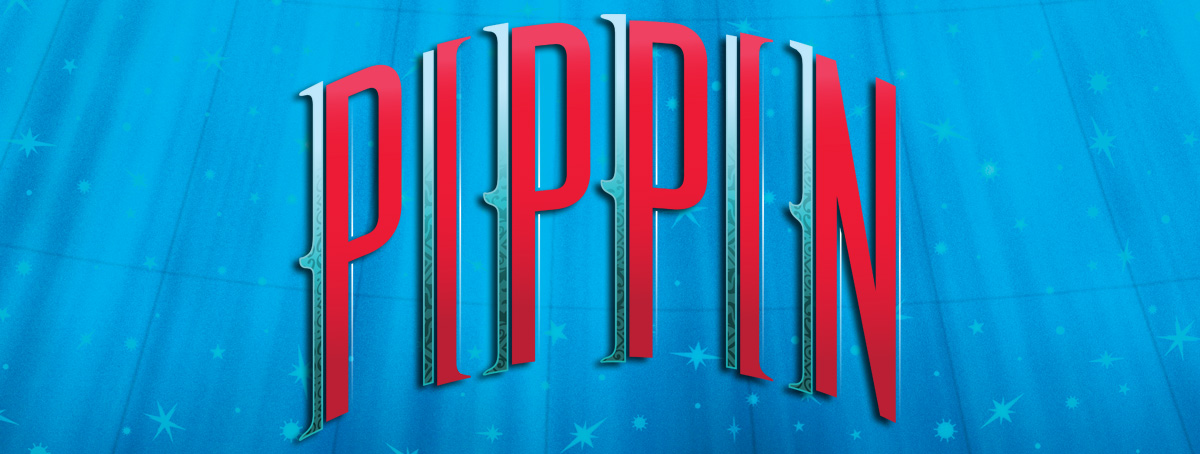Countdown to PIPPIN with The 'Pippin' Profiles: Diane Paulus on directing without a net
Posted on July 6th, 2015
The ‘Pippin’ Profiles: Diane Paulus on directing without a net
by John Moore | Aug 22, 2014
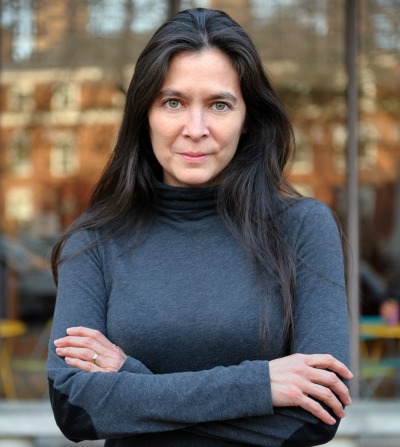
Diane Paulus
Director Diane Paulus’ mantra as an artist is to always expand the boundaries of theatre … or why bother?
“As a director,” she says, “one of my biggest interests is creating a visceral experience for audiences.”
Audiences will be feeling visceral come Sept. 6, when the national touring production of Paulus’ Tony-winning musical revival Pippin launches in Denver. They will be witnessing death-defying flips, tight-rope walks, knife-juggling and more. And “those acrobatic tricks you see are real, “ she said, “and they are real every night.”
That means be no protective cables. No safety nets.
“With every performance, those are real, extraordinary achievements happening on that stage. It’s live. It’s happening there. And the audience witnesses it in the moment. And that makes the production so immediate.”
It is that kind of theatrical daring that earned Paulus spot on Time Magazine’s annual list of the 100 most influential people in the world. … In the world.
Paulus is the Artistic Director of the American Repertory Theatre at Harvard University in Boston, where she debuted Pippin on its way to Broadway; and where she just opened a pre-Broadway run of a new Peter Pan musical based on the film Finding Neverland.
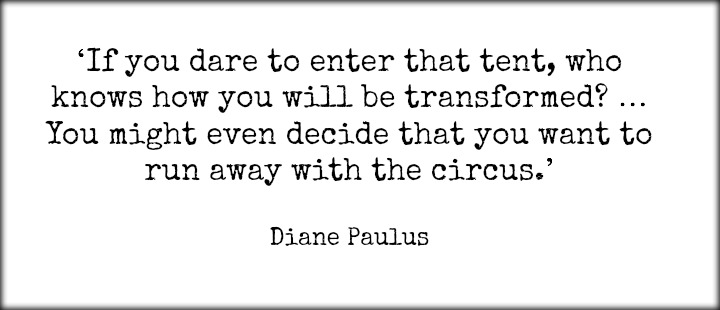
Paulus brought the London theatrical phenomenon Sleep No More to America in 2011 on its way to New York. That’s an immersive version of Macbeth that plays out on multiple floors of a warehouse in the meatpacking district of Manhattan. Paulus calls that kind of thing “adventure theatre.”
The same can be said of Pippin. Paulus got the green light to mount the first major revival of Pippin in 40 years when she told composer Stephen Schwartz she wanted to set his story of a young man search’s for meaning in the dangerous world of the circus.
“It wasn’t about layering something on that didn’t need to be there,” Paulus said. “It was about the theme of the story: How far are we willing to go to be extraordinary in our lives? That question is at the heart of Pippin’s journey. That question is also at the heart of every circus performer’s life. And it’s a literal one: How far will I go? Will I jump and land upside down on someone’s hand? Will I leap through a hoop on fire? How far can I push my human body to aspire to be extraordinary?”
What follows are excerpts from our expansive interview with one of the leading figures in the American theatre.
John Moore: We’re talking to you as you are just days away from opening the Broadway-bound Finding Neverland at your American Repertory Theatre in Boston.
Diane Paulus: Yes, we are in the middle of previews right now.
John Moore: Well, then, I can’t imagine how you can be in any kind of a Pippinheadspace, so thank you for making time.
Diane Paulus: It’s a little crazy, but I have my Pippin T-shirt on right now, so I am already in Pippin land a little bit. It’s all good.
John Moore: What was your introduction to Pippin?
Diane Paulus: I saw Pippin as a little girl growing up in New York City. I was 8 years old, and seeing it on Broadway marked me. It made such a huge impression. I remembered those characters. I remembered that world that (Director and Choreographer) Bob Fosse put on stage. I remembered Ben Vereen and all those players. And of course, I grew up on the score. I wore out my album. I played Corner of the Sky on the piano. I also sang With You at my brother’s wedding — not really understanding that, in the show, that’s a song about Pippin getting together with a lot of different women. I sing No Time at Allwith my college friends at our reunions. So I’ve been living that Pippin score my whole life. I have always wanted to touch this show again.
John Moore: What appealed to you most about revisiting it?
Diane Paulus: A lot of people remember the Fosse and they remember the music, but you don’t have a lot of people saying to you, ‘Oh, what an amazing story.’ But I have always felt there was a very powerful and important story there. To me, Pippin is almost a pageant play, like a trial of the soul in all these different stages of a man’s life that are theatricalized — going to war, the temptation of the flesh, the ordinary life. Pippin is the son of King Charlemagne, but he could stand in as an everyman. I got very excited about trying to make the meaning of his story viscerally felt.
John Moore: And what does it mean — to you?
Diane Paulus: For me, the theme of Pippin is this: How far do we go to be extraordinary in our lives? Right now, that is such a relevant question — more than ever. Just how far do we push ourselves? What is glory? What is it to be extraordinary, and what are the choices that we make in our lives? Ultimately, what I love about Pippin is that it’s not a moralistic story. It doesn’t say, ‘Well, here’s the right answer.’ It really puts the question out to the audience. When we first did Pippin up at A.R.T. (in Boston), we’re in a college town, and there were young college kids coming to see the show who were completely relating to Pippin. They were asking questions like, ‘What am I doing with my life?’ ‘What is my purpose in life?’ ‘What am I going to be, and who am I, and why am I here on the planet?’ And you know what? I am a mom in my 40s, and I am thinking about things like, ‘What are the choices I’ve made, and how do I negotiate a career and a family, and what does it mean to be extraordinary in my life?’ Over the course of this production, I have seen entire generations of people affected by it. I saw an elderly man in his 80s weeping at the end of the show, and I just thought, ‘Cleary, this show pushes you to think about the choices you are making, or the choices you have made in your life.’
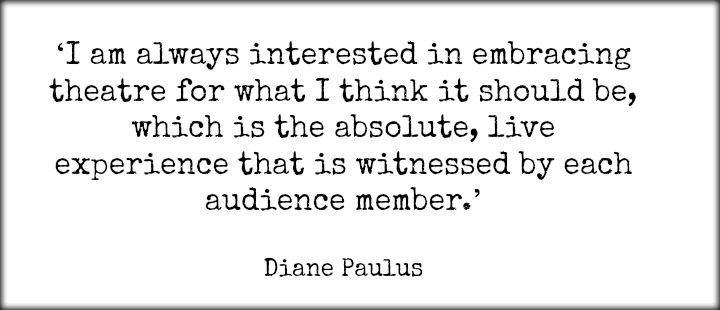
John Moore: So what was your biggest directorial challenge?
Diane Paulus: My biggest directorial challenge was determining what the world of this play was going to be.
John Moore: (Composer) Stephen Schwartz told me you weren’t the first to come to him wanting to put Pippin in a circus. But he did say that your concept was the best. How did you came up with your idea, and what was the pitch?
Diane Paulus: I really got interested in this idea of circus because, to me, the show has to have an identity for the troupe of players. And the circus has such a strong identity. It’s a traveling family that pitches their tent from town to town. They transform the lives of the people who dare to enter that tent. And then they pick up and leave, and they go somewhere else. So you don’t ever really know a lot about who those circus people are. You don’t think about them doing ordinary things like going to the supermarket and cooking. They just sort of come alive for you for as long as they are in that tent. It’s a fantasy world. That was the hook for me: What if this group is a circus troupe, and they have come to town, and they have pitched their tent, and the Leading Player is literally standing outside that tent seducing you, the audience, to come inside and ‘join us.’ And if you dare to enter that tent, who knows what you will experience? Who knows how you will be transformed? You might be so transformed that you might even decide that you want to run away with the circus. That’s another metaphor for me: How many of us in our lives have wanted to run away with the circus? Either literally, or metaphorically? When in our lives have we decided to take that leap—and when have we decided, “No,” because, for any number of reasons, I can’t run away with the circus right now. I have to choose other things. That was the metaphor me.
John Moore: Your goal is always to expand the boundaries of theatre, and that certainly seems to be what the circus achieves in Pippin.
Diane Paulus: I have been a great admirer of Les 7 doigts de la main (The 7 Fingers of the Hand). So when I met (Circus Creator) Gypsy Snider, I asked if she would ever want to work on a musical. And then we started talking about Pippin, and the theme meant so much to her. That’s when I knew this collaboration would work. Because it wasn’t about layering something on that didn’t need to be there. It was about the theme of the story: How far are we willing to go to be extraordinary in our lives? That question is at the heart of every acrobat and circus performer. That’s the first thing Gypsy said to me: ‘That is the life of an acrobat.’

John Moore: And how does that translate into the theatre experience?
Diane Paulus: I am always interested in embracing theatre for what I think it should be, which is the absolute, live experience that is witnessed by each audience member. It’s not something we can later replay on our telephones or computers. As an audience member, you are seeing it, and what you are seeing can only be experienced right then and there, and it will be different every night.
John Moore: How did you decide how you would go about replicating the Fosse choreography – and how much?
Diane Paulus: There is no one like Bob Fosse. I have always worshiped at the altar of Fosse for what he did as an artist, and for his unique vision. I knew if we were going to bring back Pippin, we had to bring back the Fosse. It’s just too connected. Chet Walker was part of that original Broadway production of Pippin. He had worked with Fosse for years, and so having Chet on the team was so important to me. When I first met Chet, he said to me, ‘Bob Fosse would never want to re-create something. He never wanted to repeat himself. He and Stephen Schwartz also told me that Fosse loved Fellini. And when you look at it, this fascination with Fellini and clowns is all over even the original choreography. It’s almost inside the DNA of the original production. But we had an opportunity with our production to take it further.
John Moore: When you approached Gypsy, she had never seen Pippin before. She said the first thing that became obvious to her was that the Leading Player was Bob Fosse, and Pippin was Stephen Schwartz. When I mentioned that to Stephen, he just kind of paused and said, ‘That’s exactly right.’ What do you think of the comparison?
Diane Paulus: I am such a huge fan of both of those artists. It was so interesting to work with Stephen because here it was, 40 years later, and he was no longer the young college kid who wrote the show. He’s now a mature artist looking back on his life. And I think now he had an appreciation for what Fosse saw in it when they made this in the ’70s. So I think Stephen really helped me understand what the brew was back in the ’70s between he and Fosse. Looking at it now for this revival as a mature artist, I think Stephen was able to identify more with Fosse. It was so edifying and inspiring for me to really understand the original production and everything that made that birth happen. A lot of people think of Pippin from having done it at their camp, or at their community theatre, or at their college. And so, for a lot of people, they know it as The Kumbaya Pippin. And this is not The Kumbaya Pippin. This story is deep, and it is profound, and it has really intense meaning. I think that was there in the original collaboration between Stephen and Bob Fosse. I remember that heat from when I was a kid, and I wanted to re-create that heat and take it even further.
John Moore: Obviously a big change with this production is that a woman is playing the Leading Player. Stephen felt no male actor could possibly follow in Ben Vereen’s footsteps.
Diane Paulus: Well, you know, in the script, it just says, “Leading Player.” It doesn’t say anything about race or gender. There is no other information, aside what is in the text. So I sent Stephen a note saying, ‘Tell me about this Leading Player. What do I have to know?’ Just give me some details.’ And he said back, ‘The Leading Player can be anyone. Male. Female African-American, white, whatever demographic or ethnicity you want.’ The only thing he said is that the Leading Player has to feel different from Pippin. The Leading Player has to represent everything Pippin has not experienced in life. So, with that … I agree with Stephen. The specter of Ben Vereen is huge, and for me that meant we had to have someone who could sing as well as Ben, who could dance as well as Ben, and who could act as well as Ben. So that was really the gauntlet that was thrown down. We had to find someone who is a true triple-threat. I knew Ben could do everything, and I knew we had to find someone who could deliver in all those departments. And, in our case — maybe also someone who is willing to get on a trapeze and be a little fearless with some of the circus stuff.
John Moore: How hard was that to find all in one performer?
Diane Paulus: We auditioned everyone. We auditioned men and women. Every possible ethnicity came through our door. We had no agenda about who we were going to cast. However, I have to confess that Patina Miller was secretly in my brain, because I had worked with her on Hair. And then she helped create this stamp on this role of a powerful woman and leader. She proved that a woman could tell this story in such an interesting way for a modern, 21st-century audience. So now, the female Leading Player is integral. We’re looking forward to what Sasha Allen does with the role now.
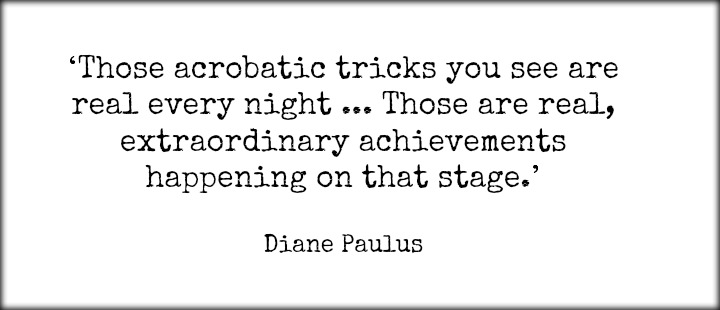
John Moore: Speaking of Hair, I have to ask you about your Jeannie, who was played by Colorado’s sweetheart, Annaleigh Ashford.
Diane Paulus: Oh my gosh. She is such a joy, and, as everyone knows, so hysterically funny. There is not one word that can come out of that women’s mouth that doesn’t make you laugh. I loved working with her on Hair. She was so quirky and funny and such a pro. And she is so committed as an artist. I felt really lucky to have had that experience with her.
John Moore: It looks like Finding Neverland is going to be the next big thing. Can you give us a sneak peek into what kind of a theatrical experience we’re in for?
Diane Paulus: What I love about the show is that it’s the story of the power of the imagination through the life of J.M. Barrie. Speaking of expanding the boundaries, he took a leap of faith and created something that everyone felt was crazy back in 1904. I mean, this was a story with boys who could fly and fairies and mermaids and crocodiles. Everybody thought he was nuts. He created Peter Pan — something we all now think of as a brand of peanut butter. And if people have seen it, they say, ‘Oh, yeah, I’ve seen it a thousand times, and it’s the most mainstream, accessible musical you could point to.’ But it wasn’t in its creation.
John Moore: This must be fun for you, having daughters.
Diane Paulus. Yes. Because at the heart of it, this is about is seeing the world through the eyes of a child. I am making Finding Neverland for my two daughters. What does it means to have spirit of a child in your life? What kind of worlds can we see through their eyes? I love the show. The heart of it is very strong.
John Moore: Before we go, I am curious what you think about the new ending forPippin. Without giving anything away, why do you think this new ending is the right ending?
Diane Paulus: Our ending now makes perfect sense. This show is about all the trials we have to go through in our lives, and everyone goes through them. And so when Pippin ends, you have this sense that it is all going to begin again. I tell you, when we were making this production, there were kids all over the place, because so many of us have children, and I let everybody watch rehearsal. It was like a circus of children. Every time we finished rehearsal, all of the kids would rush on to the stage and try to climb the poles and try to do all the acrobatic tricks. It was sort of primal. I looked at them one day and I thought, ‘That’s the story!’ Even though we know we are going to fall, a kid will always want to climb a tree. A kid will always want to try to climb a pole. It’s a part of human nature, and that to me is what we get in this new ending.
John Moore: And also looking at it from Pippin’s perspective. He has to make a decision. And I think Stephen was always a little uncomfortable that people might interpret the original ending of a man choosing to be a responsible husband and father as somehow settling. In this day and age, we really should be celebrating those men who choose fatherhood and family, should we not?
Diane Paulus: Every individual has to face certain decisions at some point in their lives. And you make your choice for a reason. And I think each choice is extraordinary, if you really get in touch with yourself. To me, that’s the story. Stop doing what people tell you to do. Identify what’s in your heart. That might mean running away with the circus. That might mean choosing a family, and to love someone, which means you can’t run away with the circus right now. It’s all about the choice. It’s all about the risk of the choice. It’s not about which choice you actually make. Can you hear your heart and follow your heart and the truth inside yourself? That is the journey of Pippin. That’s your journey. And that’s my journey, too.
John Moore was named one of the 12 most influential theater critics in the U.S by American Theatre Magazine in 2011. He has since taken a groundbreaking position as the Denver Center’s Senior Arts Journalist.
Note: “The Pippin Profiles” is a series of interviews by Arts Journalist John Moore with the “Pippin The Musical” cast and creative team leading up to the launch of the first national touring production in Denver on Sept. 6. Dallas Summer Musicals is re-posting these on the DSM Blog to countdown the Opening Night of PIPPIN at the Music Hall at Fair Park – July 7-19!
PIPPIN is presented by Dallas Summer Musicals TOMORROW, July 7-19 at Music Hall at Fair Park. TICKETS ON SALE NOW! Just go to http://tinyurl.com/og2sxh7. For more details, click here.

